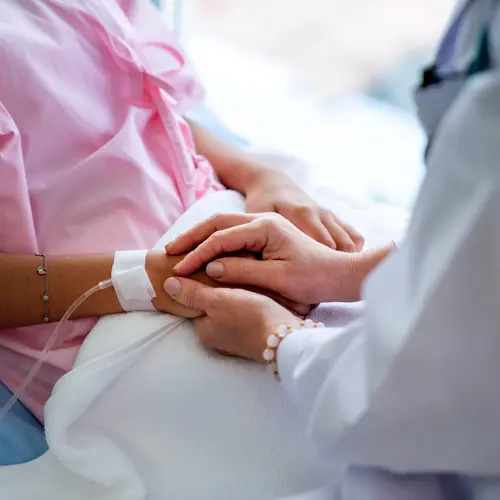When you're diagnosed with cancer, exercise may be the last thing on your mind. You have your health, life, and family to think about instead. But research shows that physical fitness may help treat cancer and improve your quality of life. That's where exercise oncology fits in. It uses physical fitness to help enhance the lives of people with cancer and cancer survivors.
How Does It Work?
There are a lot of different exercise oncology programs, but the process usually works like this:
- First, you meet with a specially trained doctor or a cancer exercise specialist.
- Next, you take a fitness exam that details your health and level of physical activity.
- Lastly, you and your doctor create an exercise treatment plan based on your diagnosis, your goals, and fitness needs.
Once your plan is complete, you're ready to exercise.
Types of Exercises
Exercise oncology uses a variety of physical fitness activities. A complete program, which focuses on your entire body, usually includes:
Breathing exercises. They help improve shortness of breath and trouble breathing. They also move air in and out of your lungs, which builds your stamina and strength.
Stretching. Radiation therapy and other cancer treatment can limit your range of motion and make your muscles stiff. Stretching restores flexibility and increases the flow of blood and oxygen to your muscles, which can help the body repair itself.
Balancing exercises. They can help improve the way you move and prevent injuries from falls.
Strength training. Treatment can leave you with weak muscles and make you tired. Strength training is a good way to add to your muscle mass, which may curb fatigue.
Aerobic exercises. Walking and other types of aerobic exercises get your heart rate up. They can also make your heart and lungs stronger.
Benefits of Exercise Oncology
Exercise during and after cancer treatment may help make side effects like fatigue and nausea less severe. It can also ease stress, depression, and anxiety that you might get because of your cancer diagnosis.
Physical activity can also improve how well you get around and give a boost to your overall independence.
Some other ways that exercise can help are:
- Put you in a better mood
- Improve sleep
- Prevent muscle loss
- Reduce chances of weight gain and obesity
- Ease pain
- Boost energy and strength
- Improve survival rates of certain cancers
Physical fitness also helps make cancer treatments work better, which can decrease the amount of time you're at the hospital.
Tips to Start Exercise Oncology
If you were inactive while you recovered from cancer or received treatment, take your time with starting a fitness routine. You don't need to jump into intense exercise right away. Follow the plan your doctor created for you, and keep these tips in mind:
Get familiar with exercise terms. "Type" is the kind of activity you decide to do, such as biking, walking, strength training, etc. "Frequency" is the number of times per week you exercise. "Intensity" is how hard you exercise. "Length" is the amount of time you spend doing physical activities.
Start slow. If you've never exercised before, begin by doing it two to three times a week for 10 to 20 minutes at a time. Low-intensity activities like walking, stretching, and breathing exercises are a good place to start.
Exercise when you have the energy. You don't need to feel guilty about missing a day. Don't push it when your blood count is low or you feel wiped out. Rest and recover and start again when you have more energy.
Add variety to your fitness routine. Change up your activities. Do low-intensity exercises on some days and high-intensity ones on others. You can also increase the length of time you do lower intensity exercises and do high-intensity activities for a shorter amount of time.
Don't be afraid to ask for help. It isn't easy to change your routine. Ask your doctor about nearby exercise programs for people with cancer and survivors if you'd like support to help stick to your exercise treatment plan.

